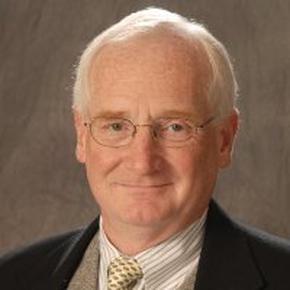If not linked to core company objectives or properly executed, intellectual property protections can be expensive and cause a significant loss of value.
IP protection decisions should be business-driven, not technology-driven.
For startups and emerging biotechnology companies, the most important elements of intellectual property that must be protected are typically confidential information and trade secrets, patents and patent applications.
They should be treated as fundamental building blocks of the company's business plan, and they should be used to shape an overarching intellectual property strategy.
About William

- More than 30 years of domestic and international experience in the discovery, development, registration, and commercialization of chemical and biotechnology products.
- Executive leadership roles with Acumen Pharmaceuticals, Mendel Biotechnology and Monsanto, managing corporate and commercial development, negotiating contracts, drafting and executing business plans, developing intellectual property protection strategies, building and leading high performance teams.
- International experience in market analyses, product development, regulatory and public acceptance, and commercialization.
- Author of two published pharmacological research articles related to Alzheimer's Disease and the holder of eight patents or patent applications.
Experience
- After four years as COO, took over leadership as president and CEO in 2008 when the company was in severe financial distress.
- Led restructuring to ensure long term sustainability, establishing a new virtual business model to leverage the company’s strengths and grow value for shareholders via R&D partnerships with other pharmaceutical entities.
- As of December 2011, all corporate debt had been retired, the company had cash sufficient for 2-years of operations and a new management team had been installed.
- With turnaround complete, returned to preferred position of COO.
- Previously as COO (2004-2008), led reorganization of Acumen’s research program and senior management team; developed Acumen’s first comprehensive and fully integrated R&D plan that linked corporate goals with R&D goals and resources.
- Negotiated a new license agreement with Merck & Co. that delivered $2 million of near term revenues and an annual $500,000 reduction in Acumen’s costs for IP prosecution and maintenance. Reorganized and refocused Acumen’s IP strategy and patent prosecution to reduce costs and increase portfolio value.
- As VP of business development and director of chemistry from 2004-2006, negotiated R&D and technology license agreements with four universities and three companies; led establishment of Acumen’s research facility ahead of schedule and below budget; developed Acumen’s small molecule therapeutic research plan, and established small molecule discovery and development program.
- Established and led all commercial development activities for licensing Mendel’s technology. Led creation of Mendel’s business strategy and wrote its first comprehensive business plan.
- Negotiated R&D and technology licensing agreements that generated over $20 million in revenues. These agreements included licenses to Mendel of key enabling technologies, eliminated onerous corporate governance provisions, consolidated and strengthened Mendel’s IP estate, and made possible a $6 million investment by Mendel’s first VC investors. Mendel’s valuation more than doubled due to these agreements.
- Negotiated technology licenses to three multi-national companies valued at over $10 million.
- Negotiated a joint venture agreement resulting in a $9 million, government co-funded, R&D program.
- Coordinated and guided work of international personnel to launch Roundup Ready Soybeans in Europe, Africa and Latin America.
- Developed a comprehensive project plan to commercialize biotech crops encompassing activities from 3-years pre-launch through 2-years post-launch. This plan was used to guide global commercialization efforts.
- Convinced regional management to resource critical activities to launch Roundup Ready Soybeans in Paraguay and Bolivia.
- Established shared goals between marketing, production and management for the Romanian Roundup Ready Soybean business. Persuaded the production team to renegotiate contracts resulting in cost reductions of 50 percent, and increased quality control by consolidating processing sites from 10 to 2, hiring QA/QC monitors, and implementing product sampling and testing to monitor quality.
- Previously held positions of director of business development, manager of European environmental sciences, and team leader for regulatory sciences.
Education
Publications
- Goure WF, Krafft GA, Jerecic J, Hefti F. Targeting the proper amyloid-beta neuronal toxins: a path forward for Alzheimer’s disease Immunotherapeutics. Alzheimer’s Research & Therapy 2014, 6:42.
- "The case for soluble Aβ oligomers as a drug target for Alzheimer's disease," Trends in Pharmacological Sciences, 2013, 34(5) 261-266, April 10, 2013.
Goure, WF, Hefti FF, Gaspar RC, Shughrue PJ, Wang F, Wang W, Zhang N, Zhao W-Q. Method for the treating a disease associated with soluble oligomeric species of amyloid beta 1-42. U. S. Patent Application Publication 2013/0089537 A1
Krafft, GA, Pray T, Goure W. Methods of enhancing cognitive function using non-peptidic compounds. World Intellectual Property Organization International Publication Number WO 2009/008891 A1
Goure WF, Gaspar RC, McCampbell A, Savage MJ, Shughrue PJ, Wang F, Wang W., Wolfe AL, Zhang N, Zhao W-Q. Antibodies, kit and method for detecting amyloid beta oligomers. U. S. Patent Application Publication 2013/0130288 A1
Krafft GA, Pray T, Goure W. Methods of modifying amyloid β oligomers using non-peptidic compounds. World Intellectual Property Organization International Publication Number WO 2009/008890 A1
Look GC, Schultz L, Polozov AM, Bhagat N, Jian W, Zembower DE, Goure WF, Pray T, Krafft GA. Methods of inhibiting the formation of amyloid-β diffusible ligands using acylhydrazide compounds. World Intellectual Property Organization International Publication Number 2009/009768 A2.
Goure WF. Process for preparing substituted benzotrichlorides. US Patent 4,575,565, Japanese Patent 61,387,742, EPO Patent Specification 0,199,701 B1, Canadian Patent 1,257,296.
Chupp JP, Lee LF, Goure WF, Molyneaux JM. 2-6-Substituted 1,2- or 1,6-dihydropyridine compounds. US Patent 4,908,057.
Goure WF, Lee LF. Methyl 4,4,4-trifluoro-3-oxo-butanethioate. US Patent 4,785,129

